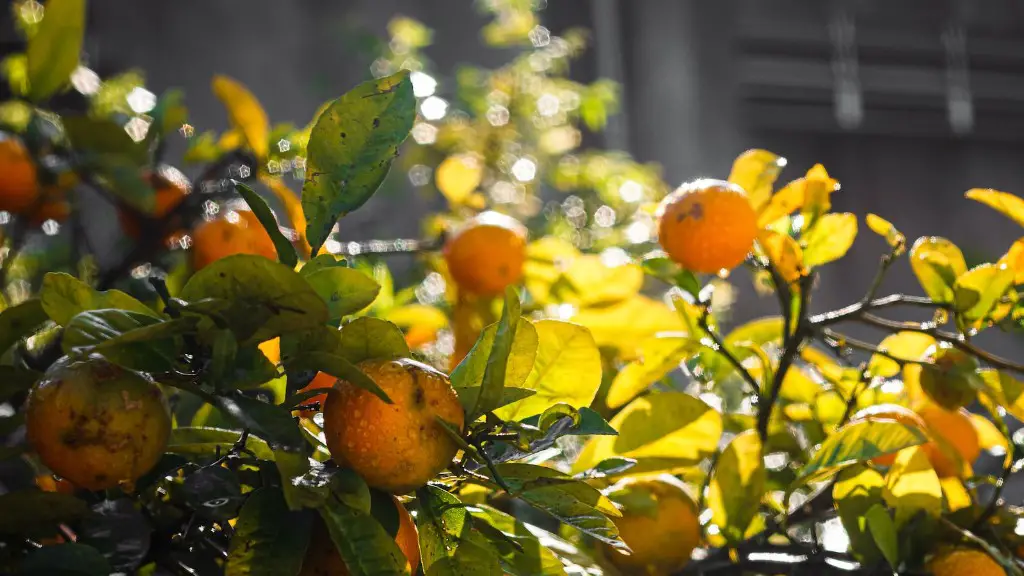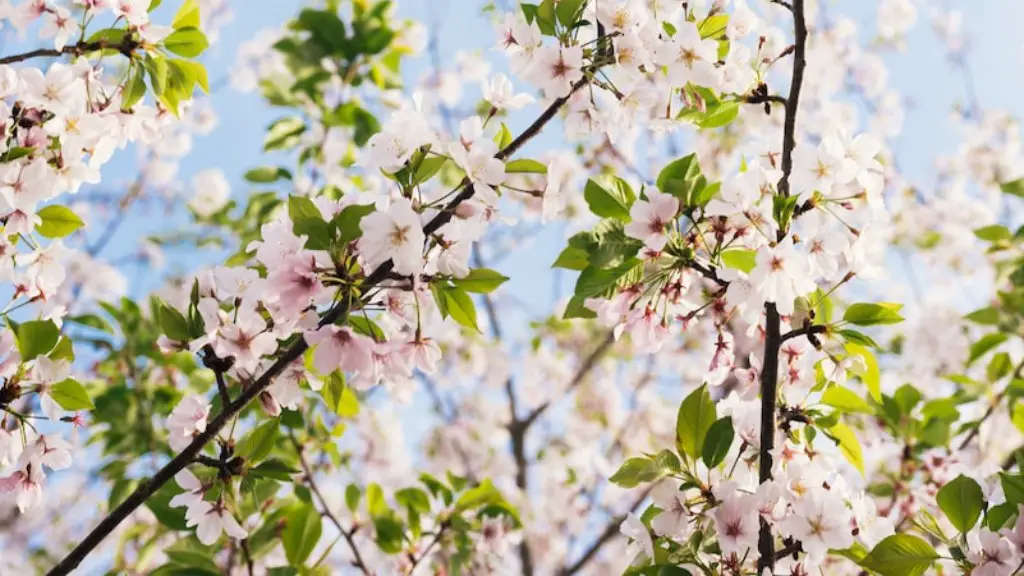Repotting a meyer lemon tree can be a daunting task for the novice gardener. To prevent stress on the plant, proper pre-planning and preparation is essential for a successful and stress-free repot. Here are few easy steps to repot that meyer lemon tree with the least amount of stress.
First and foremost, select the right pot size. Choose a pot that is slightly larger than the size of the existing root ball and ensure it has good drainage. To allow for further expansion of the root system, pot sizing should always be done with the intent to repot the next year.
Next, place the pot with the drain holes facing downwards. Add some quality organic pot mix such as a good-quality soil mix that drains well. Don’t forget to add some damping off fungus control or slow-release fertilizer.
Now it’s time to remove the meyer lemon tree from its current pot. Gently wiggle the pot back and forth and then, using both hands, slide the tree out. Run some lukewarm water if it’s too tight. Brush off all the old soil as much as possible.
Place the root ball of the meyer lemon tree in the center of the new pot and make sure the tree is securely seated. Start filling the pot with the soil mix, gently pushing it in around the sides of the root ball, tamping it down gently.
When the pot is halfway full, saturate the soil mix with water to ensure the soil penetrates all the way down to the root ball. Fill the rest of the pot, tamping down gently as it is filled up to just beneath the level of the rim. Water the tree thoroughly.
And that’s it! The meyer lemon tree is safely repotted and ready for another season of growth and fruiting. Follow these easy steps and repot meyer lemon with confidence.
Meyer Lemon Nutrition
Meyer Lemon trees require proper nutrition to achieve optimal growth and healthy fruit production. This can be achieved through regular applications of fertilizer that is specifically designed for citrus trees.Organic fertilizer is highly recommended for meyer lemon trees.
The best time to apply fertilizer is when the soil is moist and during the optimal growth season, which is during the flowering and fruiting period. A citrus-specific fertilizer should be used during the blooming and fruiting season and applied every four to six weeks.
The amount of fertilizer should be determined by the size of the tree and the age of the tree. Older trees typically require more fertilizer compared to younger trees. A general rule of thumb is to use two to three tablespoons for trees up to two years old. For trees two years and older, use up to four tablespoons.
It is also important to check pH levels for optimal absorption of fertilizer. It is highly recommended to test the pH levels of the soil and make adjustments as needed. In optimal conditions, using the correct fertilizers, meyer lemon trees will thrive and produce ample amounts of delicious, vitamin-packed fruit.
Giving A Meyer Lemon Tree Proper Light
To produce the best fruit and flower blossom, meyer lemon trees need to get plenty of sunlight each day. Sunlight is the single most important factor when it comes to their health and productivity. Aim for at least 8 to 10 hours of full sun per day.
Meyer lemon trees need to be exposed to direct sunlight in order to promote strong growth and vigorous flowering and fruiting. If outdoor sunlight is not available, then the grower can opt for artificial lighting such as LED lights.
But be aware that for artificial lights to be effective, the wattage needs to be high enough and the light has to be directed at the tree. LED lights, for instance, should be suspended from the ceiling, with the light directed towards the tree from a distance of two to three feet.
The intensity of the light from the LEDs should be adjusted and monitored to ensure the ideal photoperiod of 10 to 12 hours is achieved. If done correctly, the tree should be producing beautiful flowers and abundant fruit all year round.
Trimming Meyer Lemons
Occasional pruning is necessary in order to keep a meyer lemon tree healthy and productive. Meyer lemon trees can be pruned all year round and should be done with a sharp pair of pruning shears or a sharp pair of scissors.
The first pruning should be done when the tree reaches one to two feet in height and should be done to shape the tree and promote bushy, strong growth. Also, in order to promote healthy, vigorous growth, be sure to remove all dead, dying, or diseased branches and stems, as well as any crossed branches, suckers, and water shoots.
Pruning should also be done to encourage ample light and air circulation through the tree, as well as to keep the tree at a manageable size. As soon as the tree reaches five, six, or seven feet in height, then pruning should focus primarily on controlling the tree’s height.
Meyer lemon trees should also be pruned in order to reduce the tree’s overall width. Pruning for width should be done by removing the tallest branches in order to promote a denser and more compact habit. Proper pruning will encourage beautiful flowering, healthy, and plentiful fruit production.
Watering Meyer Lemons
Meyer lemon trees require consistent and abundant water to ensure optimal health and growth. Water the tree regularly and deeply, to ensure the soil is thoroughly moistened but never soggy.
When watering, it is important to also pay attention to the surrounding soil, as well. Meyer lemon trees tend to root deeply, so it is essential to water evenly and thoroughly in order to ensure the entire root system gets enough water.
In general, meyer lemon trees need to be watered once a week in summer and every two weeks in winter. It is also important to check for water stress during the hot summer months and to be sure to give the tree an additional drink if needed.
Watering frequency can vary depending on the size of the tree, climate, and amount of sunlight it gets. Pay close attention to the soil, and if it feels dry an inch or two below the surface, then it is time to give the meyer lemon tree another drink.
Keeping Meyer Lemons Disease Free
Meyer lemon trees are relatively easy to care for and are quite resistant to pests and diseases. That said, regular monitoring and preventive measures are still essential in order to keep the tree disease and pest free.
It is important to regularly check the tree for signs of insect infestations, such as aphids, scale, mealybugs, and other pests. If needed, a pesticide or a mild soap and water solution can be used to treat the tree.
It is also important to keep an eye out for fungal diseases, such as powdery mildew, and bacterial diseases, such as citrus canker or citrus blight. To reduce the risk of fungal diseases, be sure to avoid overhead watering and keep the tree well ventilated.
Regular pruning and removal of any deadwood or diseased branches will also help keep the tree healthy. And lastly, it is essential to make sure the tree is planted in the right soil and in the right location, as proper soil and location will help ensure the optimal health of the tree.



